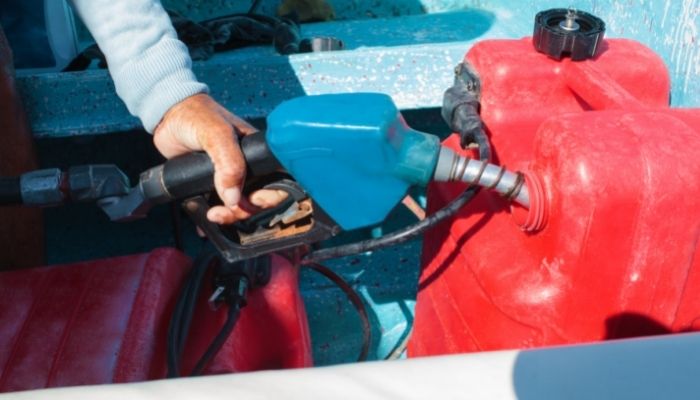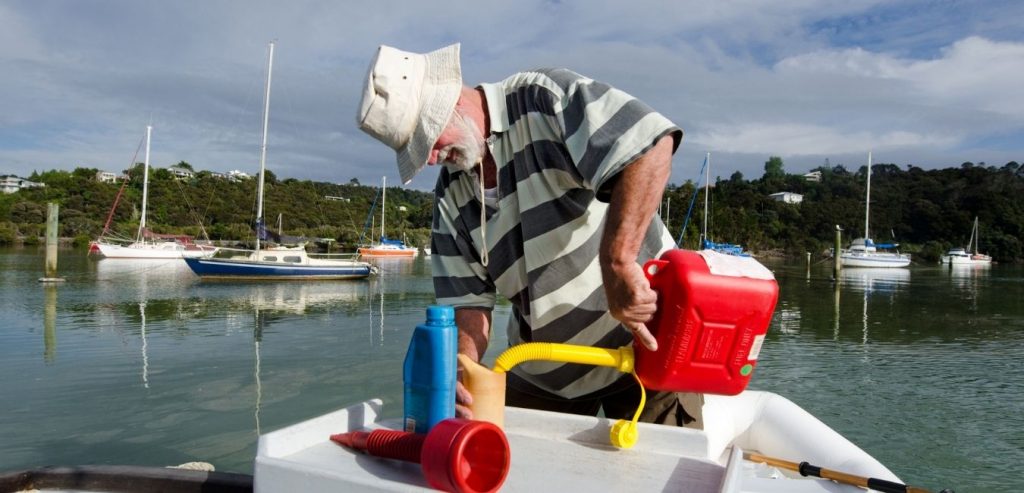“As an Amazon Associate I earn from qualifying purchases at no additional cost to you”
Are you tired of going through the stress of removing your boat’s fuel tank before cleaning it? You’ve probably heard about it, and now you’re wondering if you can clean your boat’s fuel tank the same way..
Yes, it is possible. Join us as we explore these uncharted waters. By the time we’re done, you’ll have learned how to clean a boat fuel tank without removing it.
We have outlined the steps to get the job done. There is no catch! What’s more, these instructions apply to any boat engine!
Now, let’s delve into how to clean the tank properly without contamination.
What Do I Need to Clean My Fuel Tank Without Removing It?
Below is a list of equipment you might need:
- A fuel suction pump
- A fuel tank cleaner
- Filter for Fuel
- A bucket
- Your Boat user manual
Steps on How to clean your boat’s fuel tank Without Removing it
Before you begin the cleaning process, consult your boat’s manual. You never know; it may have specific instructions on accessing and cleaning out your fuel tank. If it does, it’s crucial that you follow these instructions to a tee.
Step 1: Retain a Little Fuel in the Tank
You’ll need to have a little fuel in the tank before you begin cleaning. This will help you remove any sludge or floating particles present in the tank when you use the suction pump.
Step 2: Drain the Tank
Get a suction pump, a filter, and a hose. Rig it up and pump the fuel into a bucket to ensure that you pump out most of the dirt. Depending on the size of your tank, the draining operation can last for about 10 minutes.
Step 3: Detach the Fuel Lines
Boat motors vary in design, so make sure you check the boat engine manual to locate the fuel lines. By isolating the fuel lines and detaching them, you prevent water and dirt from getting into the engine. Once the fuel lines are disconnected, clean them and remove any dirt build-up you may find.
Step 4: Change the Fuel Filter, and Power Wash the Tank
If your filter is active, it must have accumulated dirt over time. So, it’s advisable you replace the fuel filter. Once you finish with this, pressure wash the tank and wash off any dirt or sludge you see. Again, be sure you detach the fuel lines before doing this, or you will find the engine flooded with water.
Step 5: Remove any Hidden Dirt
When you finish with the pressure washing, add sea salt cleaner to the warm water in the tank and let it sit for some 10-30minutes. Doing this will dissolve any remaining dirt that the pressure washer didn’t get. After a few minutes, pump out the water.
Step 6: Connect the Fuel Lines and Install the New Fuel Filter
Once you have pumped out the water, please leave it dry for a while, preferably a day, and then connect the fuel lines and install a new fuel filter.
Step 7: Fill the Tank and Start the Engine.
Pour in your gasoline or diesel fuel, whichever the boat runs on, and start it up. Let it run for a few minutes. This is important to maintain the fuel-system performance and integrity. Then, close up the fuel tank and tighten all the screws.
FAQs
Below we have answered a few FAQs.
Q: Is Fuel Tank Cleaning Necessary?
A: Cleaning the fuel tank will prevent smudges and dirt from getting into your engine block. Put it this way, there is only so much your fuel filter can do, and over time, there will be a build-up of dirt that may damage your engine.
Q: How Often Should You Clean Your Fuel Tank?
A: We recommend that you clean your boat’s fuel tank after two years of use. This is an excellent time to clean sediments.
Q: How Do You Know If Your Fuel System Needs Cleaning?
A: Tell Signs that your fuel system needs cleaning include a decrease in the engine’s efficiency, a decrease in power output, and a spongy response from the engine when accelerating.
Q: How Long Does It Take a Fuel Cleaner to Work?
A: A fuel cleaner will need five to ten minutes to complete the cleaning of your boat’s fuel tank.
Q: How Much Does It Cost to Clean a Fuel Tank?
A: The average cost of cleaning a boat’s fuel tank is between $50 and $80. The make and type of your boat will determine the pricing.
If you are interested in Best Reliable 2HP Outboard Motors, Check this!
Other articles that might be of interest to you:
How to Clear a Clogged Fuel Line





